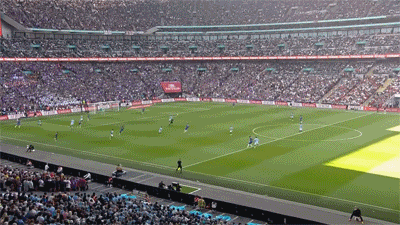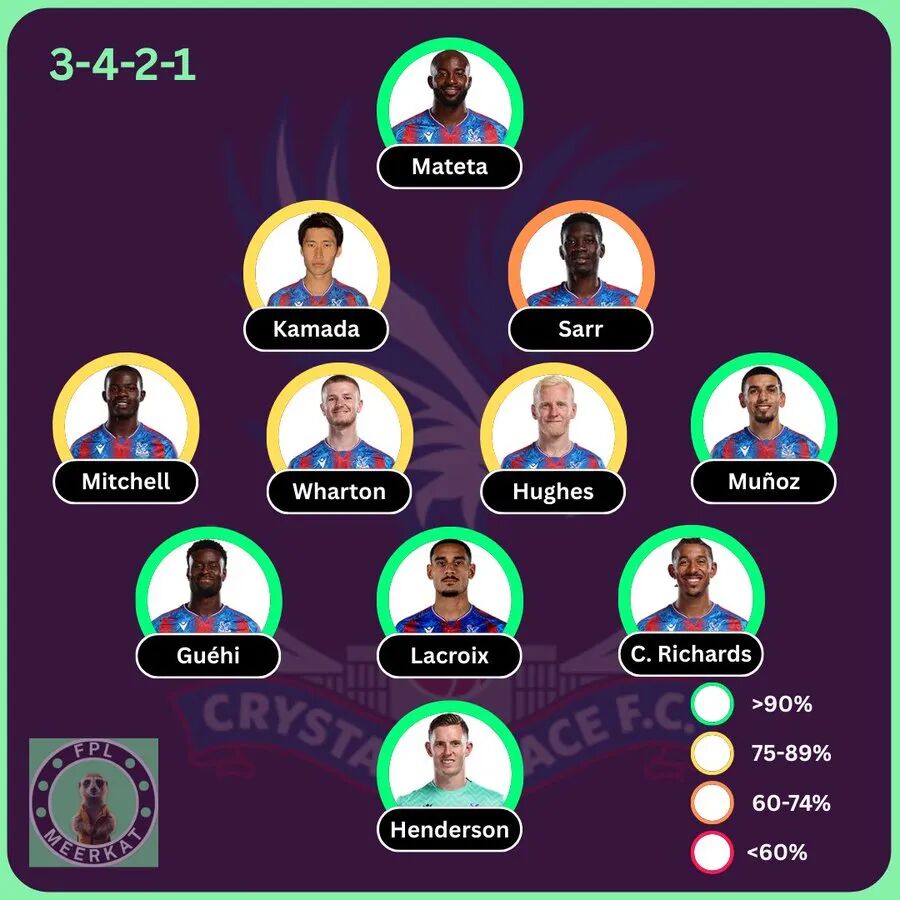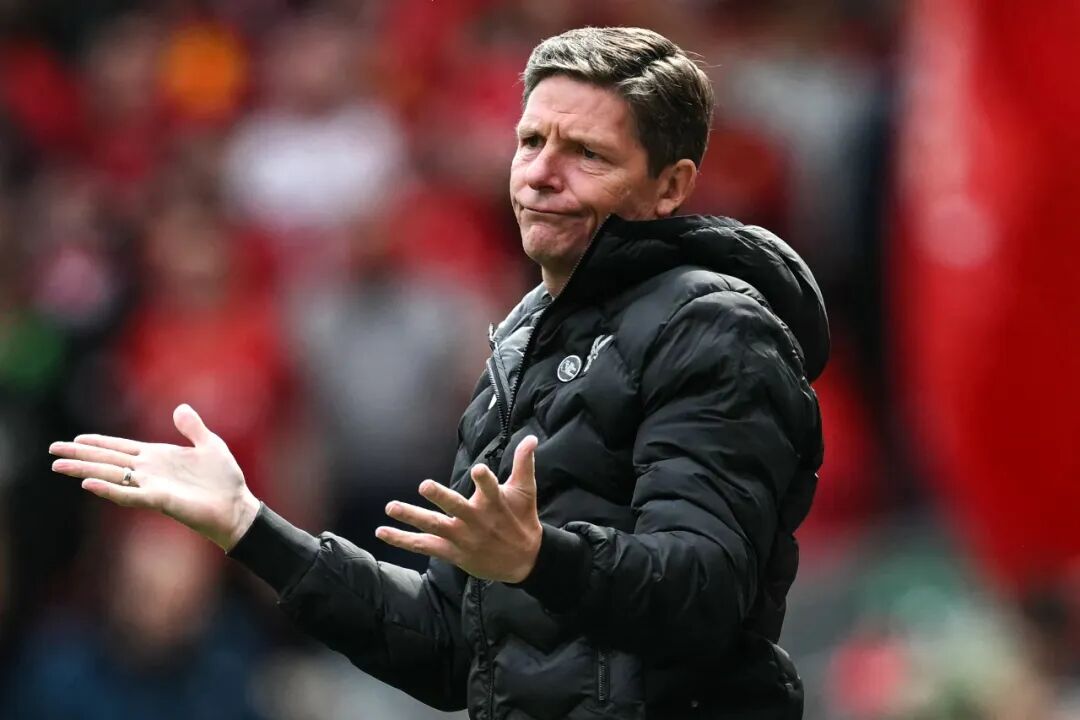Manchester United's 3-4-3 formation is poor, yet Crystal Palace impressively defeated Liverpool! How does Amrabat compare to Glazner?
Since Ruben Amrabat took charge of Manchester United, the team has won only 9 out of 33 Premier League matches, ranking just 15th among teams during the same period. Critics blame Amrabat’s 3-4-3 system, but Crystal Palace, who also use a 3-4-3, have amassed 55 points, which would place them 5th in the league standings!

Data shows that since last November, only Liverpool and Arsenal have lost fewer Premier League games than Crystal Palace’s five defeats. Oliver Glazner has led the team to an 18-match unbeaten streak across all competitions, including two wins over Liverpool and a FA Cup final victory against Manchester City. On Saturday, Crystal Palace beat Liverpool 2-1, handing the defending Premier League champions their first loss of the season. In two meetings this season, the “Eagles” remain unbeaten with one win and one draw.
Amrabat insists that playing 3-4-3 is not the problem and isn’t making excuses, as Glazner’s basic formation is indeed the same as Manchester United’s. However, why does Manchester United struggle so much while Crystal Palace thrive? Although both use the 3-4-3, the way Amrabat and Glazner approach the game differs significantly.
Crystal Palace’s 3-4-3 mainly involves retreating to defend first, inviting opponents to control possession and attack. Then, upon regaining the ball, Daniel Munoz and Ismael Sarr launch devastating counterattacks. Statistics show Palace had an average possession rate of only 42.6% last season, ranking fourth lowest in the league. Yet, they averaged 2.24 high-quality chances per game, placing them sixth in the Premier League.
When Crystal Palace gain possession, they like to feign passing and control in their defensive third, luring opponents like Manchester United into high pressing. Then the Eagles exploit the space behind defenders with direct attacks, leveraging individual player skills to break through and combine wing and central play to score. Besides United, Eze also scored the winning goal against Manchester City in the FA Cup final using this method.
In contrast, Amrabat’s 3-4-3 tactics focus more on maintaining possession and creating more shooting opportunities. But when opponents defend tightly, this passing style becomes difficult to execute—even teams like Liverpool, Arsenal, and Manchester City struggle against it. Manchester United under Amrabat lack both system and strength, and also suffer from a lack of confidence in scoring.


As a result, fans often see Manchester United making many passes, controlling possession, and taking numerous shots, only to be caught out by opponents’ counterattacks who exploit defensive gaps, leading to draws or losses repeatedly.
As Amrabat and United’s management have said, the team has shown some positive signs this season and created many chances, but the opponents have also had many opportunities and capitalized on them better, which is why the Red Devils’ rivals have won more games.
A survey by the UK’s Metro newspaper revealed that 63% of respondents believe Amrabat’s 3-4-3 approach clearly doesn’t work and that a formation change is necessary, while only 37% support him sticking to his principles.
If Amrabat insists on using the 3-4-3, he might need to adjust tactics to be more cautious and focus on countering opponents’ attacks. This explains why Manchester United often perform better against strong teams when they prioritize solid defense first in those matches.
This tactical approach may also better suit Manchester United players, especially some key ones. Although the club has spent nearly £200 million every summer transfer window in recent years, that doesn’t necessarily mean United’s players are stronger than Crystal Palace’s.

Since Ten Hag was appointed in April 2022, Manchester United have spent £830 million on transfers, but at least 30% of that was inflated prices. Transfers like Andre Onana, Antony, and Hojlund have basically been wasted money. Meanwhile, players sold such as Elanga and McTominay would fit better into Amrabat’s current style.
Most current Red Devils lack distinct characteristics, and the head coach is not skilled at maximizing players’ strengths through tactical planning. A hot topic is Bruno Fernandes, United’s best player for years, who under Amrabat has had to drop deeper into midfield to accommodate new signings—an area that doesn’t suit him at all.
Many question why the club signed both Cunha and Mbemou without selling Bruno Fernandes. Buying one less number 10 or selling the captain could help United acquire a suitable midfielder they currently lack.
In contrast, Crystal Palace, though they sell a key player every year (like Olise and Eze), and have had unsuccessful signings such as Nkunku and Franka, always ensure they have players fitting their style. Their midfield includes Adam Walton, coveted by United, paired with the tough 30-year-old Will Hughes, who once caused Casemiro’s red card. Despite losing Olise and Eze upfront, they still have quick and hardworking forwards like Ismael Sarr and Mateta.
Even though Crystal Palace earned £63 million from sales this summer and spent only £47 million on acquisitions, they still have players attractive to other Premier League giants. Walton is sought by top teams, Liverpool has long wanted Mark Guéhi, and their goalkeeper is Dean Henderson, who was discarded by Manchester United.

Glazner also has a major advantage over Amrabat: Crystal Palace can play however they want, including adopting a tougher defensive strategy without criticism. Manchester United still reminisce about their glory days under Sir Alex Ferguson, expecting to challenge for trophies each season and must play an attacking style or at least try to. Otherwise, even if they win titles like Mourinho did, fans complain about unattractive football and being dominated. If Glazner coached Manchester United, he might face the same “no difference” outcome.










 Links
Links
 Contact
Contact
 App
App


